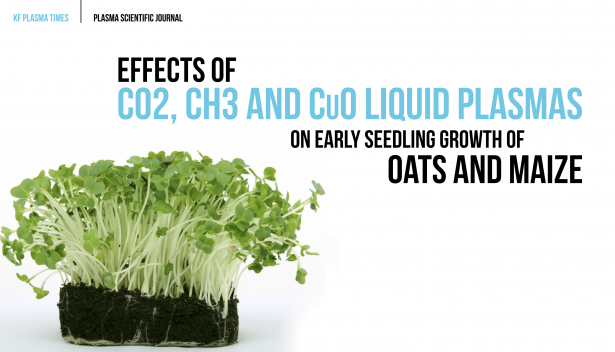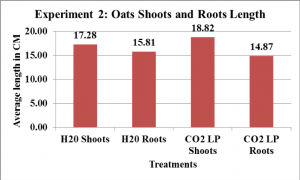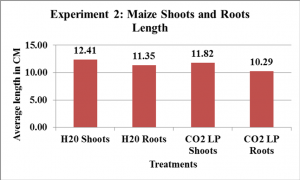Effects of CO2 CH3 and CuO2 liquid plasmas on early seeding growth of oats and maize
This article is part of the KF Plasma Times September 2018
Keywords: liquid plasma, plants, CO2, CH3, CuO, seed germination.
Published: September 2018.
Introduction
Liquid plasma experiments conducted in Kenya in May and June 2016. These experiments assessed oats (Avena sativa) and maize (Zea mays) percent seed germination and early seedling growth.
Treatments
Experiment 1. Oats: H20 and CO2 liquid plasma
Experiment 2. Oats and Maize: H20 and CO2 liquid plasma
Experiment 3. Oats: H20, CO2 CH3, and CUO2 liquid plasmas
All experiments took 21 days from sowing to data collection.
Seed Germination Method
Experimental seeds were set in paper plates (exp. 1) and in plastic containers (exp. 2 & 3) and irrigated with their respective treatments (H2O or one of the thee liquid plasmas). Irrigation was 10 to 20 ml of the substrate using a plastic syringe, which was continued as needed until DODC.
Experimental Design
Treatments were assigned in a randomized complete block design (RCBD). Treatments were replicated 4 times
Data Collection
Germinated seeds in each experiment were counted to determine relative % germination rates for the experiments. Further, shoots and roots of experimental seedlings were measured, and their lengths compared to determine their relative early growth.
For shoots and roots length, means of all 4 replicates in each experiment were calculated and are presented as the results of the three experiments.
Experimental Results
Results for Experiment 1: Oats (Avena sativa). H2O and CO2 Liquid Plasma treatments.
No significant differences in relative shoots and roots length between H2O and CO2 Liquid Plasma treatments.
Results for Experiment 2: Oats (Avena sativa) and Maize (Zea mays) with H20 and CO2 Liquid Plasma treatments.
No significant differences in relative shoots and roots length between H2O and CO2 Liquid Plasma treatments.
Results for Experiment 2: Oats (Avena sativa) and Maize (Zea mays) with H20 and CO2 Liquid Plasma treatments.
No significant differences in relative shoots and roots length between H2O and CO2 Liquid Plasma treatments.
Results for Experiment 3: Oats (Avena sativa) with H2O, CO2, CH3, and CuO2 LP treatments
Significant differences in shoots and roots length between H2O and CO2 Liquid Plasma treatments.
No significant differences in relative shoots and roots length between H2O and CuO Liquid Plasma treatments.
Significant differences in shoots and roots length between H2O and CH3 Liquid Plasma treatments.
Experimental Results
Percent germination
Exp. 1 Oats: H2O (100%) CO2 LP (100%)
Exp. 2 Oats: H2O (87.5%) CO2 LP (87.5%)
Exp. 2 Maize: H2O (75%) CO2 LP (75%)
No significant differences in seed % germination between H2O and LP treatments within experiments 1 & 2
Percent germination
Exp. 3: Oats: H2O (65%) CO2 LP (85%)
Exp. 3: Oats: H2O (63%) CH3 LP (80%)
Exp. 3: Oats: H2O (68%) CuO2 LP (65%)
Significant differences in seed % germination between H2O and LP treatments within CO2 and CH3 treatments in experiment 3.
Summary of Experimental Results
There were no significant differences in both % seed germination and seedling growth in experiment 1 and 2.
In experiment 3, CO2 and CH3 LP treatments showed superior % seed germination and superior mean seedling growth for both shoots and roots, while CuO2 treatment did not show any significant differences.
Discussion and Conclusion
It was generally noted that while experiment one had 100% germination rate, both experiment 2 and 3 recorded lower seed germination rates of approximately 80% and 70% for experiments 2 and 3 respectively.
This poor germination rate may have adversely affected mean seedling length in Exp. 2 & 3. It was further noted that the 100% germination occurred in experiment 1, where seeds were sown in open (flat) paper plates.
The seeds sown in plastic containers in exp. 2 and 3 may have reduced their germination rate to avoid overcrowding in their containers, indicating that plants intelligently adapt to environmental conditions.





